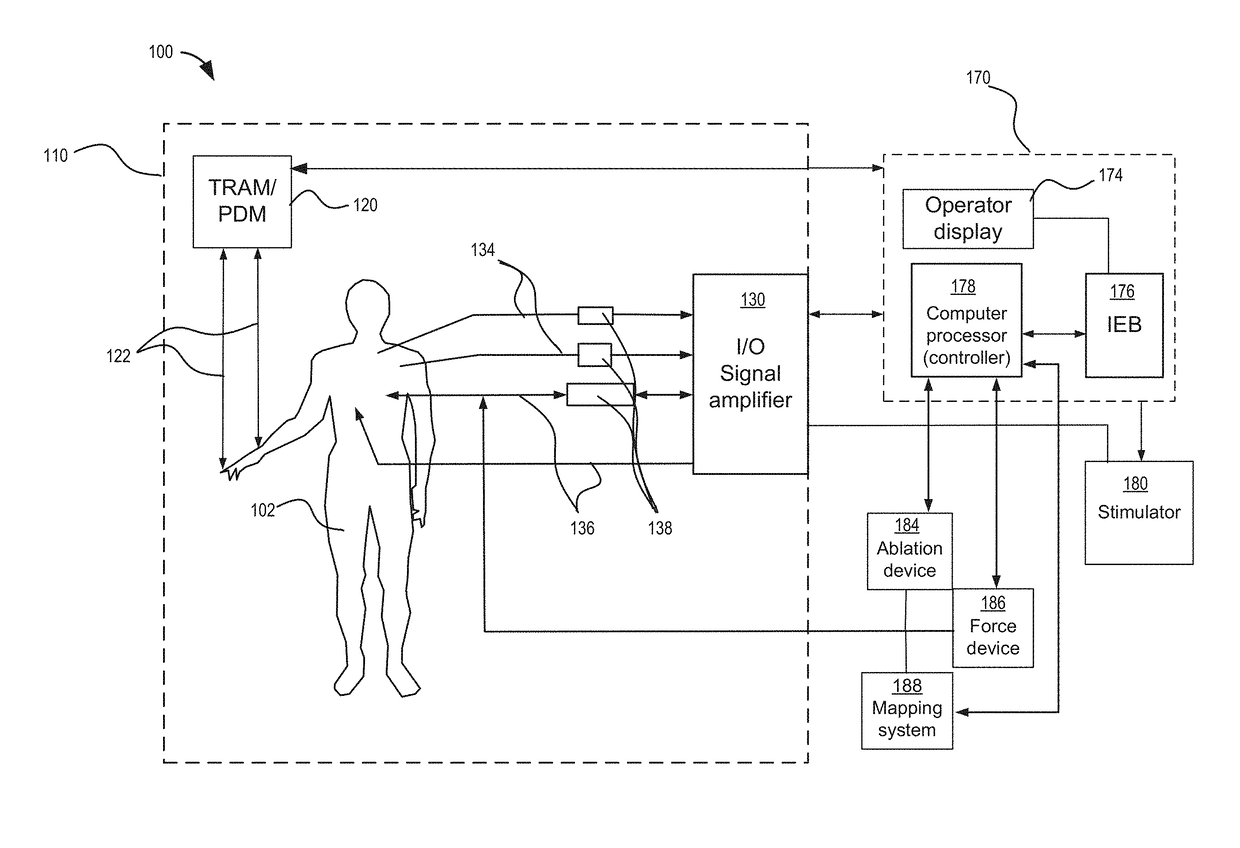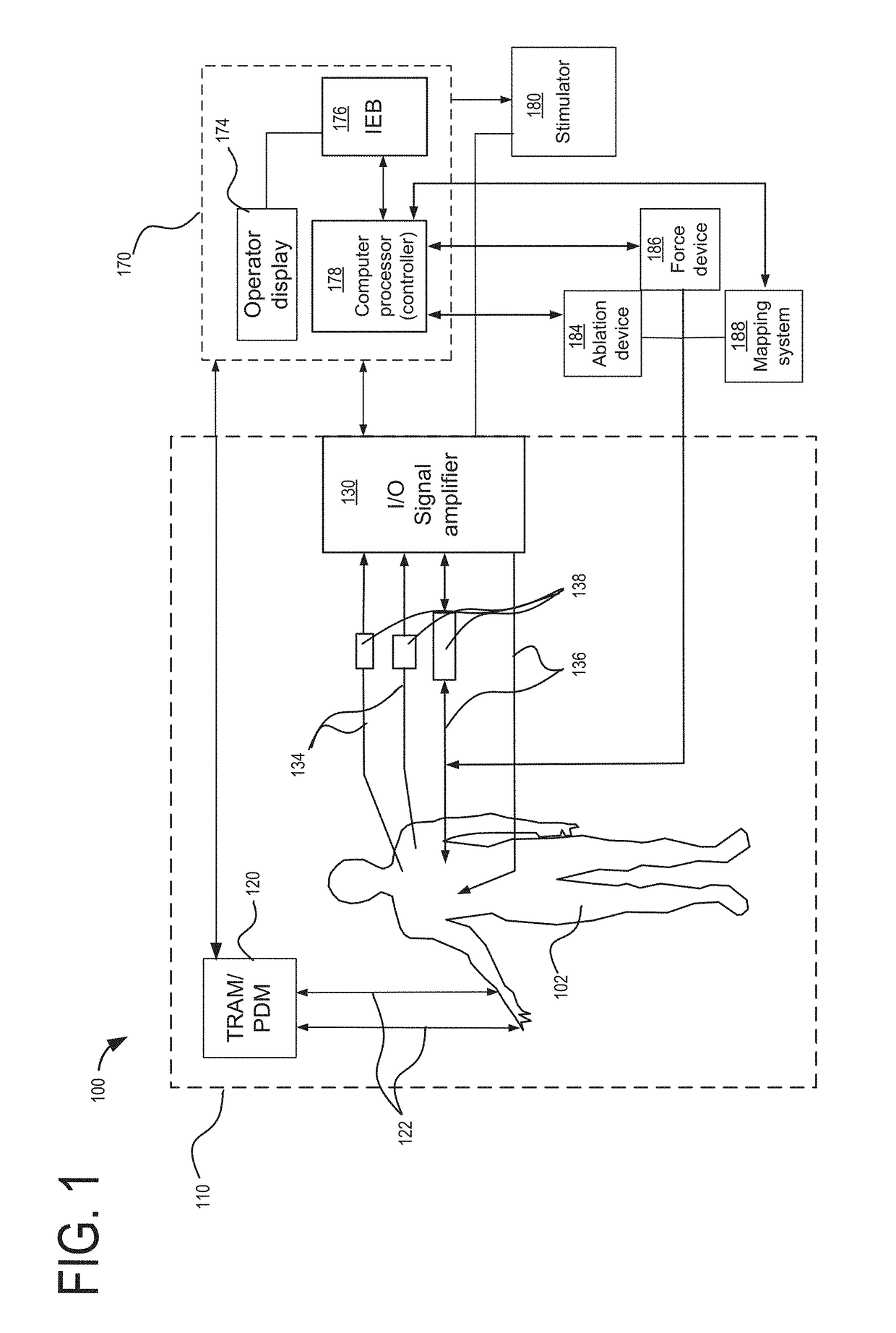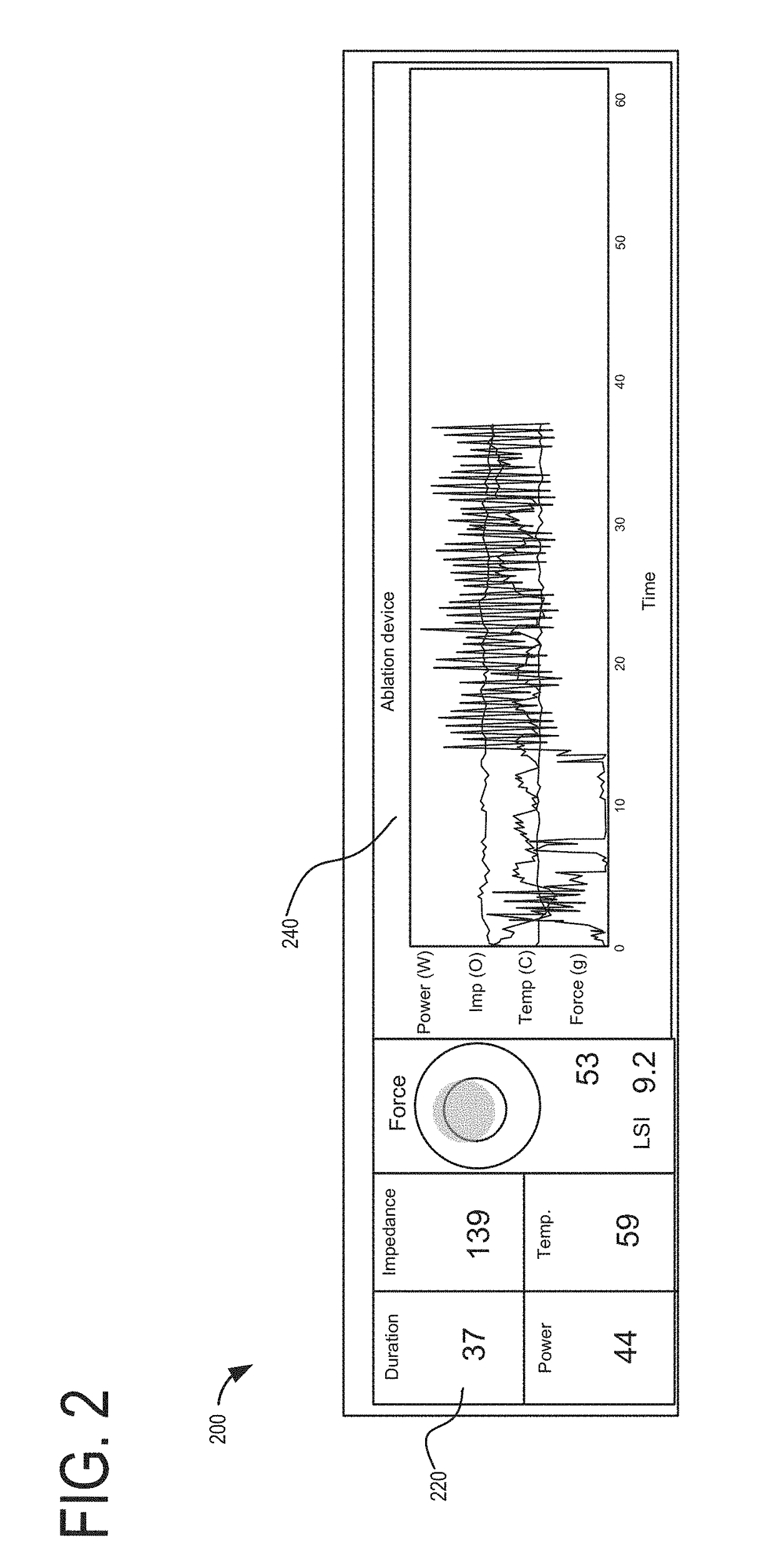Methods and systems for electrophysiology ablation gap analysis
a gap analysis and electrophysiology technology, applied in the field of methods and systems for conducting electrophysiology ablation, can solve the problems of residual propagation of the electrical pathways causing the arrhythmia, inability to perform ablation treatment, and inability to achieve the effect of the duration of the ep ablation procedure, reducing the risk of complications
- Summary
- Abstract
- Description
- Claims
- Application Information
AI Technical Summary
Benefits of technology
Problems solved by technology
Method used
Image
Examples
Embodiment Construction
[0018]The following description relates to various embodiments of methods and systems for conducting electrophysiology (EP) ablation.
[0019]In one embodiment, the issues described above may be at least partially addressed by a method of identifying gaps between electrophysiology ablation points, comprising: obtaining a plurality of ablation points recorded from a completed electrophysiology ablation procedure; digitally mapping the plurality of ablation points to an anatomical model corresponding to the completed electrophysiology ablation procedure; calculating ablation gap probability distributions for each of the plurality of ablation points based on ablation tolerance variables associated with each of the plurality of ablation points; and overlaying the ablation gap probability distributions on to the digitally mapped plurality of ablation points on the anatomical model.
[0020]EP ablation involves delivering electrical energy by way of catheter electrodes to various tissue sites w...
PUM
 Login to View More
Login to View More Abstract
Description
Claims
Application Information
 Login to View More
Login to View More - R&D
- Intellectual Property
- Life Sciences
- Materials
- Tech Scout
- Unparalleled Data Quality
- Higher Quality Content
- 60% Fewer Hallucinations
Browse by: Latest US Patents, China's latest patents, Technical Efficacy Thesaurus, Application Domain, Technology Topic, Popular Technical Reports.
© 2025 PatSnap. All rights reserved.Legal|Privacy policy|Modern Slavery Act Transparency Statement|Sitemap|About US| Contact US: help@patsnap.com



